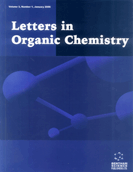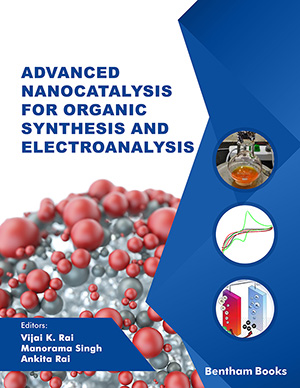Abstract
The binding of anions by highly-coloured chromophore compounds is of interest from the point-of-view of the development of optical sensors for analyte species. In this review, we have summarised our work on the interactions between oxoporphyrinogen type host compounds and different analyte species using computational methods. The origin of our interest in sensing using oxoporphyrinogens stems from an initial finding involving anion-host interactions involving a conjugated oxoporphyrinogen molecule. This review starts from that point, introducing some additional exemplary anion binding data, which is then elaborated to include descriptions of our synthesis work towards multitopic and ion pair interactions. In all the projects, we have consulted computational data on host structure and host-guest complexes in order to obtain information about the interactions occurring during complexation. Density functional theory and molecular dynamics simulations have been extensively used for these purposes.
Keywords: Oxoporphyrinogen, saddle-distorted porphyrin, chromophore, anion sensor, ion pair sensor, computational methods.
[http://dx.doi.org/10.1021/acs.chemrev.8b00734]
[http://dx.doi.org/10.1002/slct.202100677]
[http://dx.doi.org/10.1016/j.ccr.2020.213547]
[http://dx.doi.org/10.1016/j.ccr.2006.08.017]
[http://dx.doi.org/10.1039/b209598j]
[http://dx.doi.org/10.1039/C1CS15257B]
[http://dx.doi.org/10.1039/C3CS60271K]
[http://dx.doi.org/10.1039/c2cs00004k]
[http://dx.doi.org/10.1002/chem.200802469]
[http://dx.doi.org/10.1088/1468-6996/14/1/015002]
[http://dx.doi.org/10.1016/j.ccr.2021.214167]
[http://dx.doi.org/10.1007/s12039-021-01942-1]
[http://dx.doi.org/10.1039/C6RA00150E]
[http://dx.doi.org/10.1080/15583724.2016.1144613]
[http://dx.doi.org/10.1016/j.tet.2015.04.115]
[http://dx.doi.org/10.1021/ar500099z]
[http://dx.doi.org/10.1039/c0cs00083c]
[http://dx.doi.org/10.1002/1521-3773(20010202)40:3<486:AID-ANIE486>3.0.CO;2-P]
[http://dx.doi.org/10.1016/S0010-8545(02)00305-3]
[http://dx.doi.org/10.1021/ja960307r]
[http://dx.doi.org/10.1002/(SICI)1521-3773(19991115)38:22<3359::AIDANIE3359>3.0.CO;2-K]
[http://dx.doi.org/10.1039/c0ob00128g]
[http://dx.doi.org/10.1039/b814988g]
[http://dx.doi.org/10.1002/anie.200462945]
[http://dx.doi.org/10.1351/pac199870122401]
[http://dx.doi.org/10.1039/B713183F]
[http://dx.doi.org/10.1039/C4CS00157E]
[http://dx.doi.org/10.1021/acs.orglett.6b02155]
[http://dx.doi.org/10.1021/jacs.6b05713]
[http://dx.doi.org/10.1021/jacs.6b03159]
[http://dx.doi.org/10.1016/j.ccr.2006.09.001]
[http://dx.doi.org/10.1002/chem.201602987]
[http://dx.doi.org/10.1039/C6SC01843B]
[http://dx.doi.org/10.1021/acs.orglett.5b01866]
[http://dx.doi.org/10.1021/jo502673c]
[http://dx.doi.org/10.1021/acs.accounts.5b00005]
[http://dx.doi.org/10.1002/ejoc.201403701]
[http://dx.doi.org/10.1039/C6CC01679K]
[http://dx.doi.org/10.1080/10610278.2015.1120873]
[http://dx.doi.org/10.1016/j.snb.2015.10.067]
[http://dx.doi.org/10.1016/j.dyepig.2021.109918]
[http://dx.doi.org/10.1039/D1SC03751J]
[http://dx.doi.org/10.1039/C9CC00287A]
[http://dx.doi.org/10.1021/acs.joc.9b00639]
[http://dx.doi.org/10.1039/D0CC03655B]
[http://dx.doi.org/10.1039/D0SC06686A]
[http://dx.doi.org/10.1021/acs.joc.1c01179]
[http://dx.doi.org/10.3389/fchem.2021.732935]
[http://dx.doi.org/10.1002/asia.202000557]
[http://dx.doi.org/10.1039/D0NJ01963A]
[http://dx.doi.org/10.1021/acs.joc.9b00904]
[http://dx.doi.org/10.1016/S0040-4020(01)90892-0]
[http://dx.doi.org/10.1021/ic0611591]
[http://dx.doi.org/10.1021/ja903371d]
[http://dx.doi.org/10.1002/chem.201100052]
[http://dx.doi.org/10.1038/ncomms3188]
[http://dx.doi.org/10.3390/sym6020345]
[http://dx.doi.org/10.1039/c2cc31118f]
[http://dx.doi.org/10.1039/c3cc42859a]
[http://dx.doi.org/10.1002/jhet.5570320117]
[http://dx.doi.org/10.1016/S0040-4020(01)89354-6]
[http://dx.doi.org/10.1016/S0040-4020(02)01529-6]
[http://dx.doi.org/10.1021/jo049401d]
[http://dx.doi.org/10.1002/ejoc.200500257]
[http://dx.doi.org/10.1016/j.elecom.2007.09.010]
[http://dx.doi.org/10.1002/ejoc.200500626]
[http://dx.doi.org/10.1021/jp8028209]
[http://dx.doi.org/10.1002/chem.200601854]
[http://dx.doi.org/10.1002/chem.200701428]
[http://dx.doi.org/10.1021/ja9048306]
[http://dx.doi.org/10.1039/C5DT04258E]
[http://dx.doi.org/10.1016/j.tet.2005.01.128]
[http://dx.doi.org/10.1021/ja000052o]
[http://dx.doi.org/10.1021/ja9716214]
[http://dx.doi.org/10.1021/ic062213g]
[http://dx.doi.org/10.1021/ic010958a]
[http://dx.doi.org/10.1002/anie.199424851]
[http://dx.doi.org/10.1021/ja103889f]
[http://dx.doi.org/10.1021/ja4124175]
[http://dx.doi.org/10.1021/acs.jpcb.8b03684]
[http://dx.doi.org/10.1021/acs.jpclett.0c02284]
[http://dx.doi.org/10.1002/ange.19350482605]
[http://dx.doi.org/10.1063/1.2370993]
[http://dx.doi.org/10.1007/s00214-007-0310-x]
[http://dx.doi.org/10.1021/ja2056165]
[http://dx.doi.org/10.1016/j.tetlet.2010.03.113]
[http://dx.doi.org/10.1142/S1088424619501463]
[http://dx.doi.org/10.1039/C9DT02365H]
[http://dx.doi.org/10.1002/chem.202003166]
[http://dx.doi.org/10.1016/j.snb.2021.129911]
[http://dx.doi.org/10.1021/jacs.9b10952]
[http://dx.doi.org/10.1039/c1ob05454f]
[http://dx.doi.org/10.1016/j.mtchem.2021.100454]
[http://dx.doi.org/10.1039/D1TC03859A]
[http://dx.doi.org/10.1039/D1OB00601K]
[http://dx.doi.org/10.1021/acsomega.0c05554]
[http://dx.doi.org/10.1039/D0TC01401J]
[http://dx.doi.org/10.1016/j.jphotochem.2021.113456]
[http://dx.doi.org/10.1039/D0RA05693F]
[http://dx.doi.org/10.1021/acs.analchem.0c05007]
[http://dx.doi.org/10.3390/molecules26226761]



























